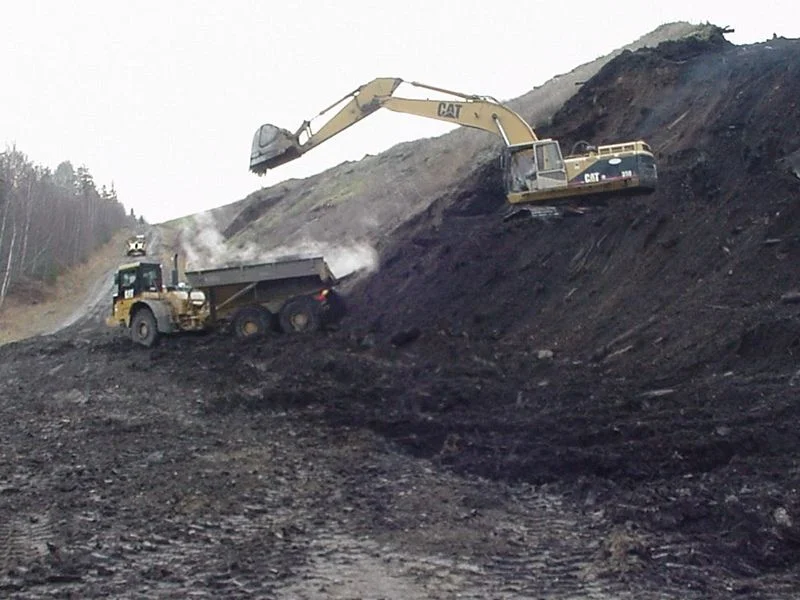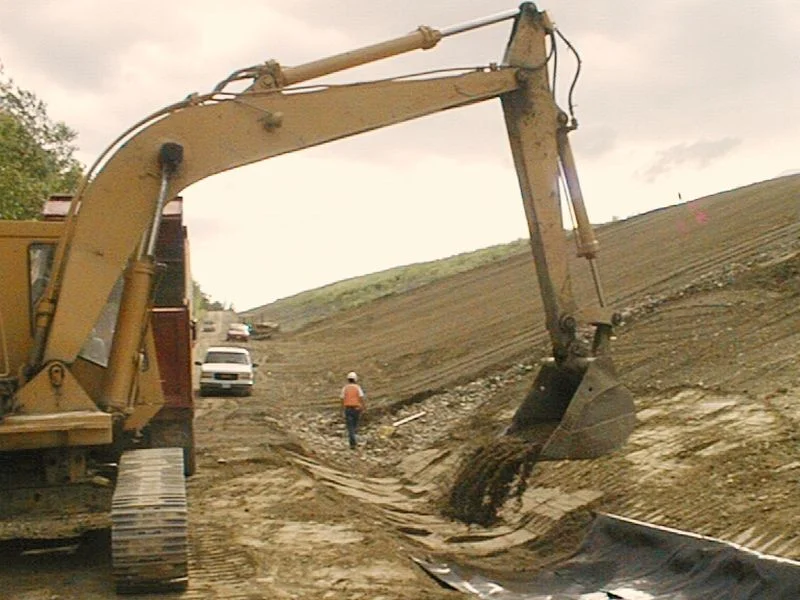SME has worked closely with Woodland Pulp LLC and its predecessors (Domtar and Georgia Pacific Co.) to manage the No. 3 Landfill. In 2000, SME was retained to develop and implement closure of a 26-acre bark/sludge/ash waste disposal unit at the facility.
SME continues to provide ongoing landfill permitting, engineering, and operation assistance at this facility.
Challenges
The closure involved the relocation of more than 130,000 cubic yards of waste, final grading of the bark pile surface, and placement of an engineered cover system. The grade was very steep in some places, and waste material needed to be excavated, repositioned, and re-graded to achieve a final landfill topographic surface suitable for long-term slope stability and cover construction without expanding the footprint of the bark pile. This re-graded bark pile then needed a cover system constructed to reduce infiltration and leachate production.
Project Outcome and Value Added
SME supported Woodland Pulp through all phases of regulatory permitting, and provided construction oversight, quality control testing, and closure documentation for the bark pile.
Our exploratory investigation, which characterized the types and limits of waste comprising the 26-acre deposit, was used to prepare closure plans. Plans included the completion of excavation and waste exclusion plans and design drawings and specifications for excavating and closing the 26-acre waste pile.
For the landfill construction/closure, SME performed the engineering necessary to permit the 0.5 million cubic yards on-site borrow source.
SME also calculated gas generation rates for the biodegradable portion of the waste deposit and designed a gas collection and venting system that was included in the cover system.
With limited available space for dewatering and settling ponds for the low-strength lime waste, SME performed an extensive geotechnical evaluation on the sediments and is using this information to develop a space-efficient settling pond sediment management plan. Additionally, SME provides operating guidance for highly-efficient waste placement in order to maximize the life of the operational landfill areas.

